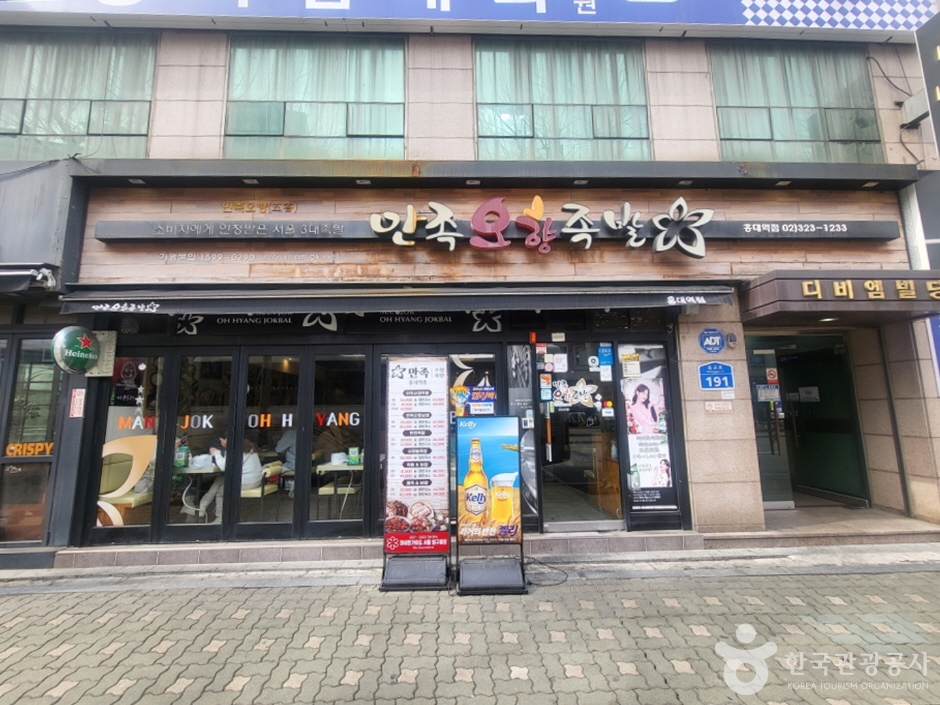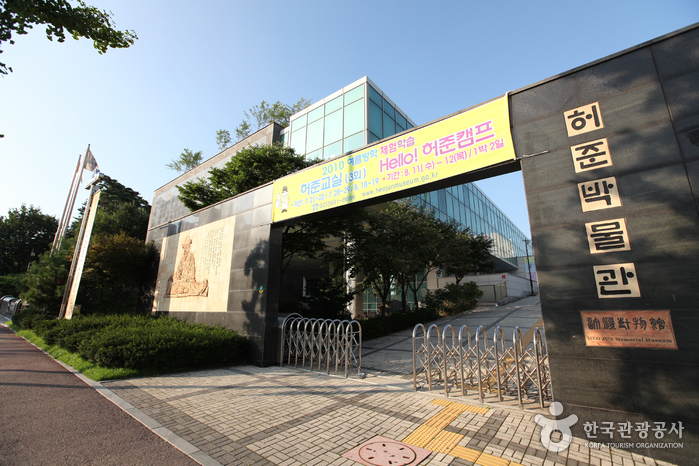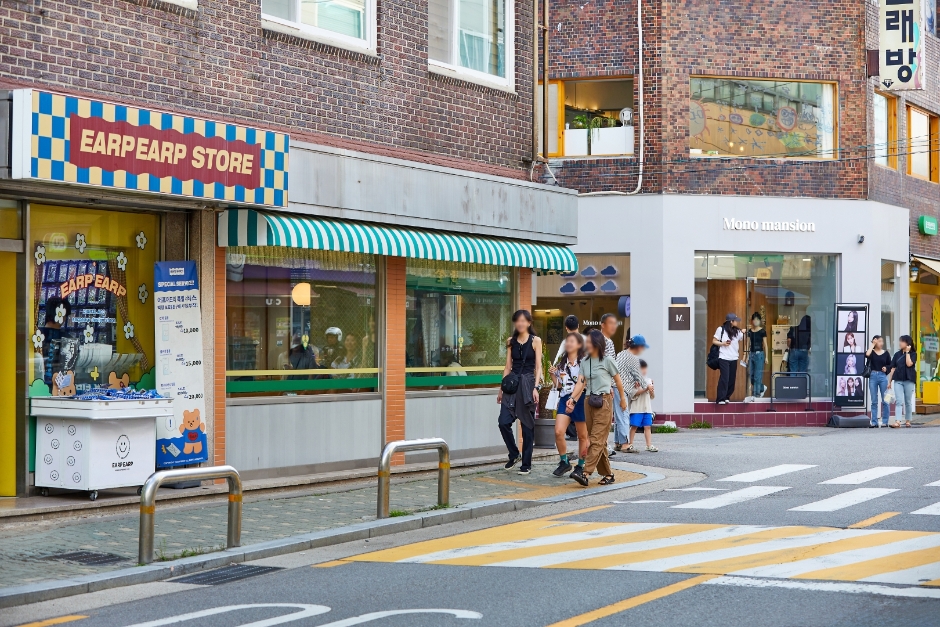Olive Young - Hongik Univeristy AREX Station Branch [Tax Refund Shop] (올리브영 홍대공항철도역점)
7.6Km 2024-06-27
183, Yanghwa-ro, Mapo-gu, Seoul
-
Manjok Ohyang Jokbal Hongik Univ.(만족오향족발 홍대)
7.6Km 2024-03-20
191 Donggyo-ro Mapo-gu Seoul
+82-2-323-1233
Located near Hongik Univ. Station, Manjok Ohyang Jokbal is said to be one of the top three jokbal (braised pigs' feet) restaurants in Seoul. Their signature dishes are manjog ohyang jokbal (braised five-spice pigs' feet), jokbal and jaengban guksu (jumbo sized buckwheat noodles) set menu. Manjok ohyang jokbal is made with pigs' feet marinated in five different sauce flavors, giving it a chewy texture and rich flavor. Bul jokbal (spicy braised pigs' feet) is a popular dish that can be paired with bossam (kimchi cabbage wraps with pork) or jokbal as a half and half set menu.
LG Best Shop - Donggyo Branch [Tax Refund Shop] (엘지베스트샵 동교점)
7.6Km 2024-04-18
6, Sinchon-ro, Mapo-gu, Seoul
-
Heojun Museum (허준박물관)
7.6Km 2021-08-13
87, Heojun-ro, Gangseo-gu, Seoul
+82-2-3661-8686
The Heojun Museum opened in honor of the academic accomplishments and charitable deeds of the renowned medical scientist, Heojun of the Joseon dynasty. Located next to Heojun Neighborhood Park, the museum collects and displays Heojun related materials.
Mangnidan Street (망리단길)
7.6Km 2025-05-20
Poeun-ro, Mapo-gu, Seoul
Mangnidan Street is located near Poeun-ro, which can be reached in about 6 to 8 minutes of leisurely walk toward Mangwon Hangang Park from Exit 2 of Mangwon Station on Subway Line 6. Its name comes from the combination of Mangwon-dong and the Gyeongnidan Street in Itaewon, meaning the “Gyeongnidan Street of Mangwon-dong.” There are a variety of restaurants, cafes, dessert shops, and other small shops, each with their own charm, making it a great place to take the kids shopping or just get some rest. This place is quite close to Mangwon Market, so visitors can stop by the market if time allows. Another way to fit this area into the itinerary is as a pit stop for desserts or some shopping before heading to Mangwon Hangang Park.
Daiso - Hongdae Branch (No. 2) [Tax Refund Shop] (다이소 홍대2호)
7.6Km 2024-04-22
182, Yanghwa-ro, Mapo-gu, Seoul
-
Muji - AK & Hongdae Branch [Tax Refund Shop] (MUJI AK&홍대)
7.7Km 2024-04-23
3F, 188, Yanghwa-ro, Mapo-gu, Seoul
-
Design Skin - AK & Hongdae Branch [Tax Refund Shop] (디자인스킨 AK&홍대)
7.7Km 2024-04-18
2F, 188, Yanghwa-ro, Mapo-gu, Seoul
-
Age 20´S [Tax Refund Shop] (AGE 20´S)
7.7Km 2024-04-23
3F, 1955, Goyang-daero, Deogyang-gu, Goyang-si, Gyeonggi-do
-
The Halal Guys (할랄가이즈 홍대)
7.7Km 2024-03-19
10 Hongik-ro 6-gil, Mapo-gu, Seoul
+82-2-332-1802
The Halal Guys is a Middle Eastern halal food specialty restaurant that originated in New York, USA, offering dishes prepared in accordance with Islamic law. Their main menu includes the falafel platter, which is made by mixing chickpeas, onions, garlic, and spices and served with salad, as well as the combo sandwiche featuring chicken and beef with their special sauce. It is located near Hongik University.


![LG Best Shop - Donggyo Branch [Tax Refund Shop] (엘지베스트샵 동교점)](http://tong.visitkorea.or.kr/cms/resource/30/2890130_image2_1.jpg)


![Daiso - Hongdae Branch (No. 2) [Tax Refund Shop] (다이소 홍대2호)](http://tong.visitkorea.or.kr/cms/resource/94/2888394_image2_1.jpg)
![Muji - AK & Hongdae Branch [Tax Refund Shop] (MUJI AK&홍대)](http://tong.visitkorea.or.kr/cms/resource/16/2888216_image2_1.jpg)
![Design Skin - AK & Hongdae Branch [Tax Refund Shop] (디자인스킨 AK&홍대)](http://tong.visitkorea.or.kr/cms/resource/62/2889162_image2_1.jpg)
![Age 20´S [Tax Refund Shop] (AGE 20´S)](http://tong.visitkorea.or.kr/cms/resource/76/2891076_image2_1.jpg)
 English
English
 한국어
한국어 日本語
日本語 中文(简体)
中文(简体) Deutsch
Deutsch Français
Français Español
Español Русский
Русский